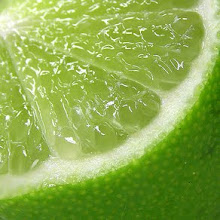I think the most successful thing about this picture is the photography. The photography is eye catching and colorful. The numbers on the bottom are well laid out and all, but the photography is what you look at when you have a calendar. It's a photo that you will probably be looking at the whole month, but in this case, the whole year. It is not too busy because the sky sort of evens out all the shadows and colors going on in the trees. I think the fading into the calendar is also a beautiful aspect.
2. What is the message of the work? How do you know?
I'm not sure if this has a thesis/message like videos do and documentaries, but a message I get from this calendar is almost like, "Nature is beautiful." because they chose a gorgeous picture to put on the calendar. The question was, "What about nature's beauty?" Looking at this calendar actually persuaded me to look into the background story of the text. Arbor Day Foundation inspires people to take care of nature. When I learned this, the whole message sort of pieced itself together. The message I got was that nature is beautiful, but it's only beautiful if we take care of it and nurture it.
I'm not sure if this has a thesis/message like videos do and documentaries, but a message I get from this calendar is almost like, "Nature is beautiful." because they chose a gorgeous picture to put on the calendar. The question was, "What about nature's beauty?" Looking at this calendar actually persuaded me to look into the background story of the text. Arbor Day Foundation inspires people to take care of nature. When I learned this, the whole message sort of pieced itself together. The message I got was that nature is beautiful, but it's only beautiful if we take care of it and nurture it.
3. Who or what is the intended audience for this work? How do you know?
I think the audience is intended for anyone. This can apply to eco-friendly people who would say, "Awesome, that's exactly what I'm doing." and non-environmentally friendly people who would say, "This is really beautiful scenery, I should take more care of the Earth to see more of this." So, yes, I think the message applies to everyone who, basically, lives on Earth and enjoys views like this. I know this because I don't know many people who don't like scenery like this. It is a positive aspect to keep nature looking like this and naturally, people would want to know how to keep it like this.
I think the audience is intended for anyone. This can apply to eco-friendly people who would say, "Awesome, that's exactly what I'm doing." and non-environmentally friendly people who would say, "This is really beautiful scenery, I should take more care of the Earth to see more of this." So, yes, I think the message applies to everyone who, basically, lives on Earth and enjoys views like this. I know this because I don't know many people who don't like scenery like this. It is a positive aspect to keep nature looking like this and naturally, people would want to know how to keep it like this.
4. How do specific elements of the work sample come together to deliver the message?
Like I've said before, the photo is a dominant factor in this calendar. It has specks of color to show the variety of plants that grow and the unique mix usually interests more people. The color help a lot because no one would really want to see a picture of the same kind of tree. Also, I think the font and organization of the numbers stand out as professional, easy to use, and visually appealing.
5. Describe one technique the creator of this work used. Why do you think this technique was used for this specific piece of work?
One technique I noticed immediately was the reflection. The way it was sort of scrunches together at a lower opacity and have it slowly fade into the calendar gave transition. I think it was a subtle transition to a more black and white background which made it an easy switch, not a distressing one.
One technique I noticed immediately was the reflection. The way it was sort of scrunches together at a lower opacity and have it slowly fade into the calendar gave transition. I think it was a subtle transition to a more black and white background which made it an easy switch, not a distressing one.
6. Why did you choose this work sample?
I chose this work sample because it was complete. I think it did an excellent job of incorporating photography along with information. It would have been nice to see a caption or maybe an interesting fact about the place they are displaying.
I chose this work sample because it was complete. I think it did an excellent job of incorporating photography along with information. It would have been nice to see a caption or maybe an interesting fact about the place they are displaying.



